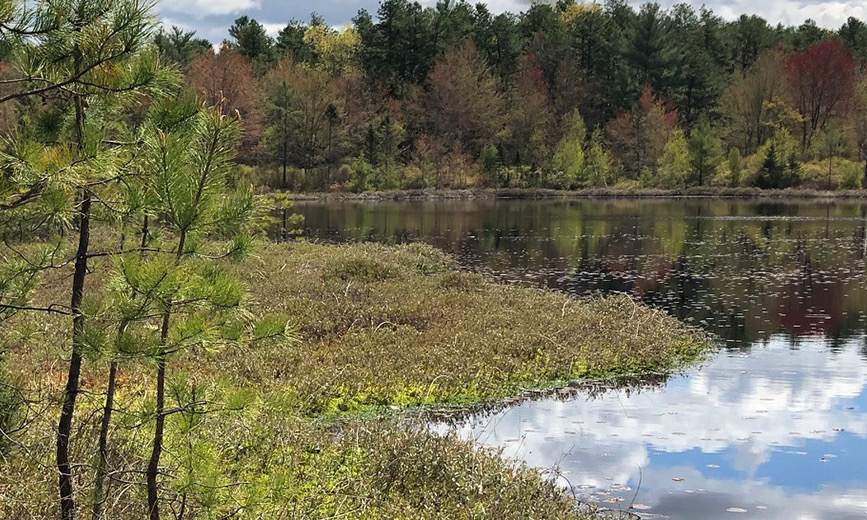The name “Ponemah” refers to the “land of the hereafter” from Henry Wadsworth Longfellow’s “Hiawatha.” The 75-acre Ponemah Bog Wildlife Sanctuary came under the protection of the Audubon Society of New Hampshire in 1979 through the generosity of Dr. and Mrs. Homer McMurray and local friends of the Sanctuary.
Ponemah Bog Wildlife Sanctuary features a three-acre pond surrounded by a floating sphagnum mat and encircled by upland oak-pine woods. This bog resulted from the last receding glacier, which left a kettle hole pond in the Souhegan River outwash plain. Changes over the last 12,000 years have been recorded by the bog itself, which has preserved, in its layers of peat, pollen blown in from the surrounding woods. The moss mat has advanced over the last 6000 years to gradually fill in the pond with plant remains. The food web is rather simple in bogs: the acid peat locks up most of the nutrients, offering little to support grazing animals and their predators.
The bog is home to both hardy northern plants, such as spruce, and southern species, such as pitcher plants and sundew. Ponemah hosts a combination of conifers, including white pine, pitch pine, black spruce, and tamarack, all relics of more southern or northern forests. Today, Ponemah Bog is a living museum, a relict habitat for plants far from home and an outdoor classroom for wetland botany and ecology.
Photo courtesy of NH Audubon

